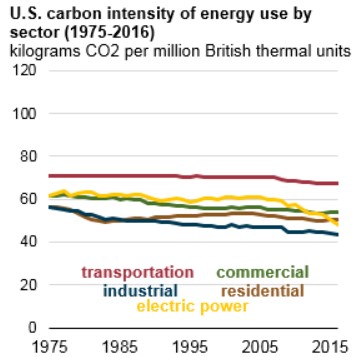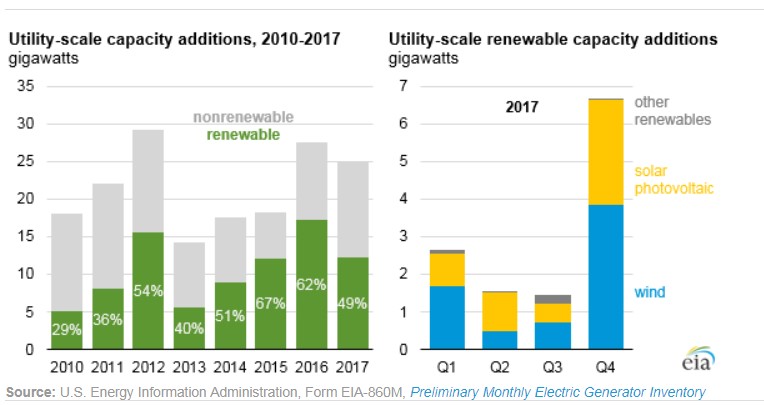
Beneficial Electrification: What and Why?
In our 2018 Energy Outlook, we pointed to several emerging trends that are likely to shape our work in the future—including a cleaner grid, local focus, a growing energy storage market, and heat pump technology for space and water heating and cooling. While these developments are exciting on their own, the combination is indicative of a fundamental transformation of the power sector.
One manifestation of this transformation is beneficial electrification. Beneficial electrification is the practice of electrifying energy end uses otherwise powered by fossil fuels like natural gas, propane, fuel oil, or gasoline, in order to reduce greenhouse gas emissions and achieve other benefits. While the greatest opportunities for beneficial electrification lie in transportation and space and water conditioning, many end uses have the potential for electrification. Reducing the carbon intensity of electricity use, particularly by adding capacity from renewable sources in the electric power sector, makes this practice possible.


Who Benefits? Electrifying end-use devices at the right time and in the right place can produce an all-around win for electricity providers, consumers, and the environment. For electricity providers, electrification enables:
- Better grid management / contributes to increased electricity sales
- Local job creation from increased demand for electricity
- A solution to meeting environmental goals through emissions efficiency
- Customer engagement
Analysis suggests aggressive electrification, coupled with supporting policies, could nearly double utility electric sales by 2050 while decreasing energy sector carbon emissions by 70 percent when the power supply mix is significantly decarbonized. Consumers benefit from bill savings, reduced exposure to fuel price variability, and the opportunity to make a “green” lifestyle choice. Many new electric devices also enhance convenience for the consumer. Society and the natural environment benefit significantly from long-term reduction in greenhouse gas intensity of the grid, increased energy efficiency of electric end uses, and greater integration of variable renewable sources—together providing a pathway for deep decarbonization.
When is Electrification Beneficial?
Not all electrification is beneficial electrification. To ensure value for a range of stakeholders, industry leaders have begun to define electrification as being beneficial only when the practice affects one of the following three criteria without adversely affecting the other two:
1) Enables better grid management
2) Saves money for consumers in the long run
3) Reduces negative environmental impact
Whether electrification is beneficial depends on the efficiency of electric equipment compared to a direct fuel-powered alternative, and coincidence of the equipment’s time of use and the generation serving electric load at that time. For example, if an efficient device is programmed to charge at night in a location where nighttime wind energy is highly prevalent, electrification will likely be beneficial. End use location and changing energy supply mix over the equipment’s lifetime are also important factors in determining whether electrification is beneficial. As the transformation continues, our industry is asking many questions: Who is doing beneficial electrification? What equipment and devices support it? Which policy changes are needed? What role can new rate design play? How will equity be addressed? What metrics will be used? Stay tuned to our beneficial electrification blog series, It’s Electric: Understanding Beneficial Electrification, as we dive more deeply into these and other questions on our mission to champion and deliver innovative energy initiatives that produce enduring economic and environmental benefits for all.